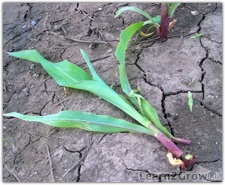There are quite a few websites giving information on the management of these pests. There isn't however chemicals to control these available to the general public. Spraying with a bleach solution has been mentioned. Most state that the eggs are laid in grass, sometimes long grass and the larvae are active at night. If the ground was previously grassed, this may be the reason you have so many. What seems to be recommended is to till the soil the winter before planting, and again just before planting to bring the grubs to the surface. Birds and wildlife including toads, shrews and chickens can then pick off these and reduce the population to start with. Hoeing is recommended, to keep weeds down (reduces egg laying places) along with putting collars around individual plants, but in your situation this would be backbreaking and very costly as you have a large plot to do this on. With pumpkins scrambling along the ground I would presume that it's not just the juvenile plant but their shoots as well that could be vulnerable. Moth traps are also suggested for the adults & using insect killing nematodes or amongst others Tachinid flies can be an option. When planting on a small scale, using diatomaceous earth, used coffee grounds or egg shells around the base of each plant would make it uncomfortable for the grubs to crawl over. A head torch and manually picking up the bugs in the evening, could make for an unusual entertainment, but possibly only feasible on a small scale. A decent border of bare earth/dry soil around the plot to discourage grubs from crawling across dry soil is an option if you have the space. As are planting sunflowers to attract them (and away from the real crop), as their favourite food. Cutworms also like cornmeal so spreading this around may help.
Knowledge of life cycle of these moths could be used to time the planting of your produce for when the adults would have emerged and therefore no grubs around, having about 3 life cycles per year. This is similar to planting to avoid the carrot root fly activity. Vigilance to spot the grub and remove it before it moves into the next plant may help.
It would seem to be there are several things you can do - prior tilling of soil, timing of planting to avoid grub emergence, moth traps, feeding them, keeping down long grass nearby and watering in the morning so that the top soil is dry by the evening when that are active, are your current options.
Websites that may be of use for you. Www.almanac.com; www.planetnatural.com; www.motherearthnews.com; and uric.ucdauis.edu. Hope this is of some help and I'm sure there are others who have had more experience who may be able to offer alternative suggestions. But an attack on them from different directions will hopefully reduce the grubby attack to an acceptable level.

